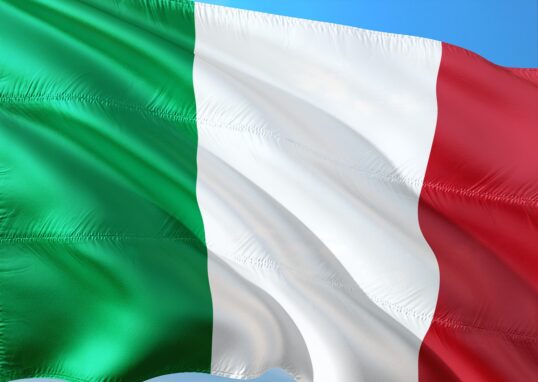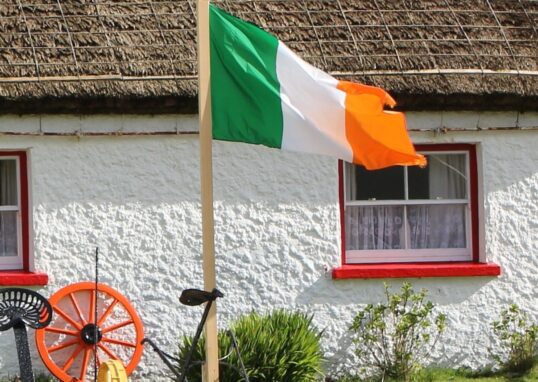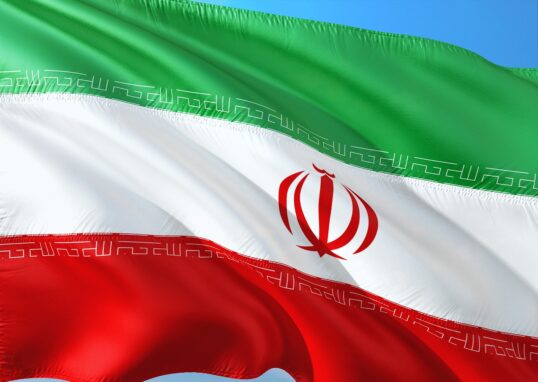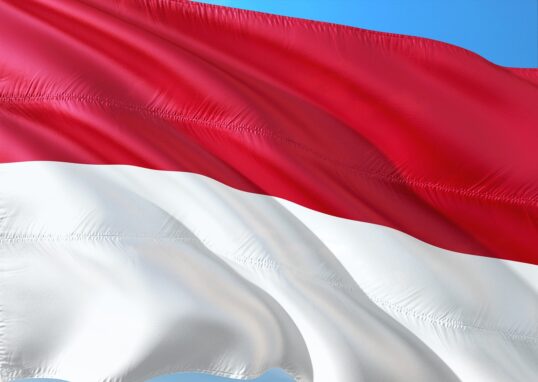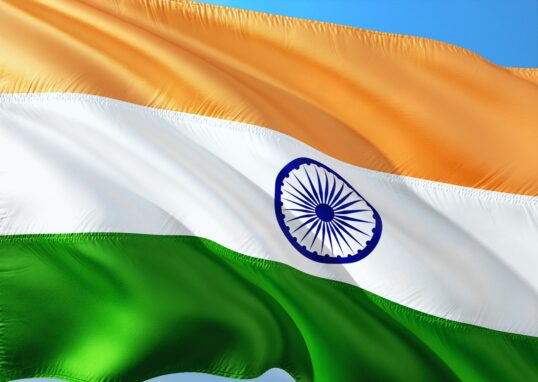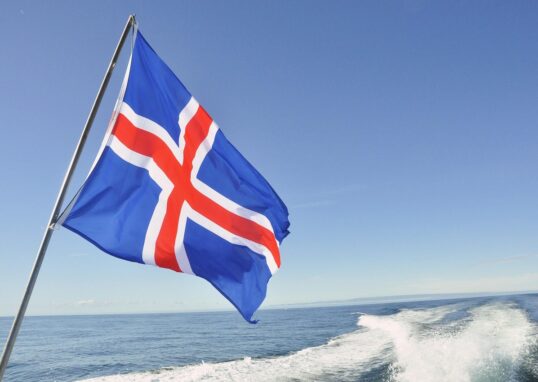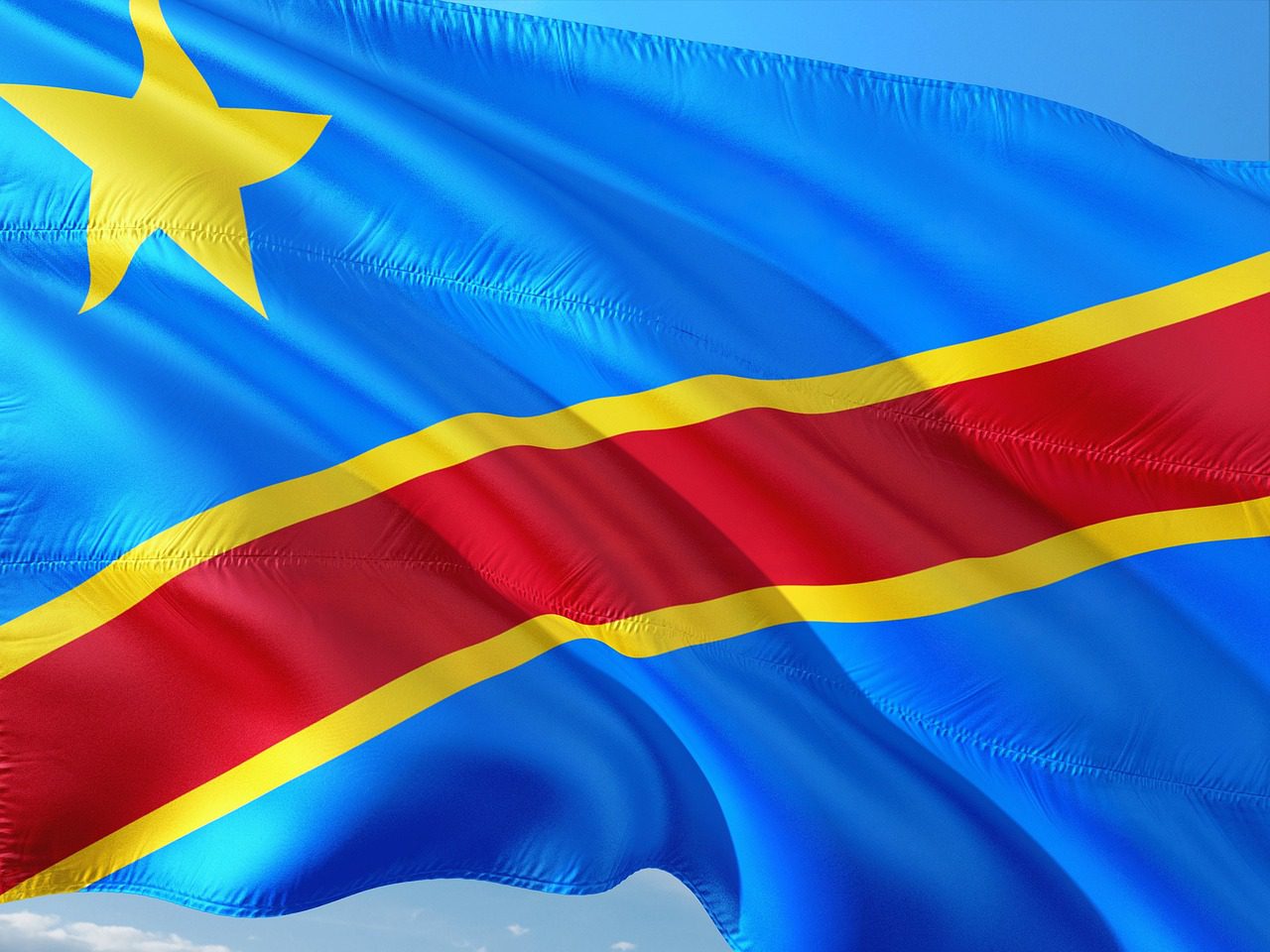
Exploring the Heart of Africa: The Democratic Republic of the Congo
The Democratic Republic of the Congo, or Congo, is usually called DRC. It is one of the most fascinating countries in Africa, large, beautiful, and full of life. In the heart of Central Africa lies the Congo, surrounded by nine countries. It is a land of great rivers, green rainforests, high mountains, and rich wildlife. It is called the “Sleeping Giant of Africa” due to its huge natural resources and great potential, but it is also a land of contrast: full of beauty, history, and challenge. Let us make an attempt to learn about this great place step by step.
Geography and Natural Beauty
At the heart of this country flows the Congo River-also the second-longest river in Africa, after the Nile. The river is powerful, wide, and beautiful. It courses through the rainforest, carrying life wherever it goes, being a source of transportation and energy. It is covered mostly by tropical rainforest, which is part of the Congo Basin. This is often referred to as the “lungs of Africa” because it produces a great deal of oxygen and absorbs carbon dioxide. The forest is home to thousands of plant and animal species. In the east, the land rises up into mountains. The Ruwenzori Mountains, otherwise called the “Mountains of the Moon,” are extremely high and misty. Here is found Mount Stanley, that is the third-highest mountain in Africa. Volcanoes that include Mount Nyiragongo and Mount Nyamuragira are also found in the east. The country also boasts a number of beautiful lakes; among them are Lake Kivu, Lake Tanganyika, and Lake Albert. These lakes are calm, deep, and full of fish. 
Climate
The Congo has a tropical climate, which means it is hot and humid most of the year. Rain falls heavily, especially in the central and northern parts. The dry season is short, while the wet season is long. In the eastern mountains, the weather is cooler due to the altitude. The western area near the Atlantic Ocean is somewhat cooler and windy.
People and Culture
French is the official language, but local languages widely spoken include Lingala, Swahili, Tshiluba, and Kikongo. Congolese culture is colorful and energetic. Music plays a big role in everyday life. Congo is famous for Congolese rumba and soukou music. Some of the artists, like Papa Wemba and Koffi Olomide, became famous worldwide. People love dancing, singing, and celebrating.
Capital City: Kinshasa
Kinshasa is the capital of the Congo and one of the biggest cities in Africa, situated along the Congo River and diagonally opposite Brazzaville, which is the capital of the Republic of the Congo. Incidentally, both Kinshasa and Brazzaville are the two closest cities in the world that are capitals of independent nations, with only a river separating them. Kinshasa is lively, crowded, and full of charm. It is known for the vibrant music, art, and street life that fill the city. The residents, referred to as Kinois, are creative and friendly. You can visit Mausolée Laurent-Désiré Kabila, a national monument dedicated to the former president. The National Museum of Congo displays historical artifacts, traditional art, and cultural items. The Central Market is busy and colorful, offering everything from fresh fruits to handmade crafts. The Congo Riverfront is a perfect place to enjoy the sunset, watch fishermen, and feel the rhythm of the city. At night, the city comes alive with music: bars and restaurants play local songs, and people dance in time with the drums.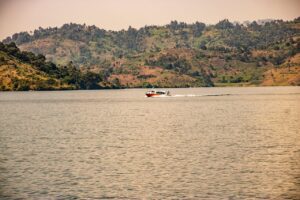
Wildlife and National Parks of the Congo
The Democratic Republic of the Congo is one of the most biologically rich countries in the world. It is often called the “green heart of Africa” because of its vast tropical forests, wide rivers, and rare animals. Many of its national parks are UNESCO World Heritage Sites because they protect unique plants and wildlife found nowhere else on Earth.
Let’s explore the wonderful wildlife and national parks of Congo in detail.
Virunga National Park
The Democratic Republic of the Congo is among the most biologically rich countries in the world. Due to its vast tropical forests, wide rivers, and rare animals, it is frequently referred to as the “green heart of Africa”. A lot of its national parks are UNESCO World Heritage Sites because they protect unique plants and wildlife found nowhere in the world. Let’s explore in greater detail some of the wildlife and national parks of Congo.
Wildlife
Virunga is home to the mountain gorilla, one of the rarest animals in the world. These gentle giants live in the forested mountains and are closely related to humans. Visitors can go on gorilla trekking tours, where guides help travelers see these magnificent creatures in their natural homes.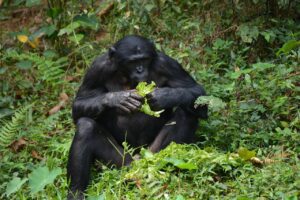
Volcanoes and Landscape
Virunga is not only famous for its wildlife but also for its dramatic landscape. It contains two active volcanoes: Mount Nyiragongo and Mount Nyamuragira. Mount Nyiragongo is especially famous because it holds one of the largest lava lakes in the world. The red lava glows brightly at night, creating a breathtaking view. Trekkers from around the world climb to the summit to watch the fiery crater. The combination of wildlife, forest, and volcanic landscape makes Virunga one of the most extraordinary places in Africa.
Kahuzi-Biega National Park
Another important wildlife sanctuary, Kahuzi-Biega National Park, is located near the city of Bukavu in eastern Congo. It was founded in 1970 by a Belgian conservationist, Adrien Deschryver. The park is named after two extinct volcanoes: Mount Kahuzi and Mount Biega.
Wildlife
Virunga is home to one of the world’s most rare animals: the mountain gorilla. These gentle giants are closely related to humans and make their homes in the forested mountains. Visitors can take guided gorilla treks to see these magnificent animals in their natural habitats.
Landscape
Kahuzi-Biega is most famous for the Eastern Lowland Gorilla, more commonly known as Grauer’s Gorilla. Grauer’s gorillas are larger in size than mountain gorillas and may be found in the dense lowland rainforests. These gorillas are shy and peaceful, and visitors may trek into the forest to see them with the help of trained guides. Apart from gorillas, other animals inhabiting this park are chimpanzees, forest buffaloes, bongo antelopes, and giant forest hogs. The park houses many colorful birds, which include Turacos, African grey parrots, and hornbills. In 1980, UNESCO declared Kahuzi-Biega a World Heritage Site for its ecological importance.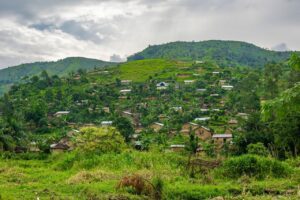
Salonga National Park
It is the biggest tropical rainforest reserve in Africa, and it lies at the heart of the Congo Basin. With an area of over 36,000 square kilometers, much of this vast and remote national park remains untouched by people.
Wildlife
Salonga is home to rare animals that live only in the Congo Basin. The most famous of these is the bonobo, a close relative of humans. Bonobos are peaceful apes that live in groups and communicate with gestures and sounds. They are smaller than chimpanzees and are known for their gentle behavior.
Conservation Challenges
Salonga is hard to protect due to its size. Poaching and illegal logging are some of the problems, but international organizations are working hand in hand with the locals to protect its wildlife. A visit to Salonga is a real adventure since it is so remote and wild. Since Salonga is uniquely ecologically positioned, it receives scientists and conservationists frequently.
Garamba National Park
The Garamba National Park lies in northeastern Congo, bordering South Sudan and Uganda. It is one of the oldest parks in Africa, created in 1938.
Wildlife
Garamba’s savannas and grasslands set it apart from Congo’s rainforests. Among the many animal species, African elephants, giraffes, buffaloes, hippos, and crocodiles make Garamba home. The park was once renowned for its northern white rhinos; unfortunately, however, they are almost extinct due to poaching. Landscape The landscape of Garamba is a mixture of open grassland and woodland. Large rivers, such as the Dungu and Garamba, also traverse the park and turn areas into wetlands that host many bird species. Grasslands are green and full of life during the rainy season.
Landscape
The landscape of Garamba is a mix of open grassland and woodland. Rivers like the Dungu and Garamba flow through the park, creating wetlands that attract many birds. During the rainy season, the grasslands turn green and full of life.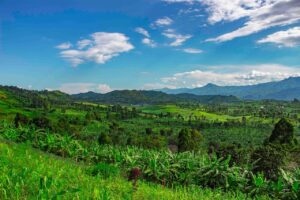
Upemba National Park
Upemba National Park is located in the Katanga region in the southeast of the nation. It was created in 1939 and includes wetlands as well as highlands.
Wildlife
Zebras, antelopes, hippos, and reptiles can all be found in Upemba. Fish and water birds abound in the rivers and lakes. African spoonbills, herons, and Pel’s fishing owls all call the park home. Upemba is home to a diverse array of animals due to its range of habitats, which include swampy lakes and grassy plains.
Landscape
The stunning Upemba Depression, a group of small lakes joined by the Lualaba River, is part of the park. In addition to having a wealth of biodiversity, this area is particularly stunning at sunrise and sunset.
Maiko National Park
One of Congo’s most isolated and unexplored areas is Maiko National Park, which is situated in the northeast of the nation.
Wildlife
The African forest elephant, chimpanzee, and okapi are among the rare and endangered species that are well-known in this park. Additionally, it offers the Grauer’s gorilla habitat. The dense and untamed forest is challenging to access but rewarding for researchers and explorers.
Conservation
Human activity is limited in Maiko due to its isolation. However, some areas of the park have been impacted by hunting and mining. It is being protected and local communities are being supported by conservation organizations.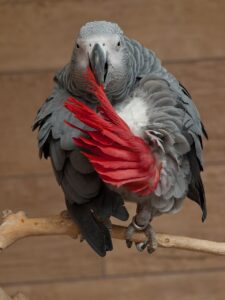
Lomami National Park
One of Congo’s newest parks, Lomami National Park was formally created in 2016. It is situated between the Lomami and Lualaba Rivers.
Wildlife
The lesula monkey, which was unknown to science until 2007, is one of the new species that scientists have found in Lomami, making it unique. Peacocks, forest buffaloes, and bonobos are also protected in the park. The area is serene and lovely, with rivers slicing through the dense forests.
The Importance of National Parks
The national parks of Congo are global treasures. They safeguard the water and air that sustain life in addition to animals. Congolese forests help combat global warming by storing vast amounts of carbon. Locals benefit financially from tourism in these parks, which also promotes conservation. Rangers, porters, and guides are all essential to the preservation of wildlife. Poaching, illicit mining, deforestation, and political instability are just a few of the issues these parks must deal with. Their protection depends on community engagement and international cooperation.
Economy and Natural Resources
Natural resources abound in Congo. Massive reserves of copper, cobalt, diamonds, gold, and coltan can be found there. Coltan is crucial to the production of electronic gadgets like laptops and smartphones. Despite this wealth, the country faces economic challenges. Many resources are not used properly because of corruption and conflict. However, the future holds great potential for growth if managed wisely. Agriculture is also important. Farmers grow coffee, cocoa, bananas, cassava, and maize. The Congo River provides water and transportation routes for trade.
Tourism in Congo
Tourism in the Congo is growing slowly. The country offers many adventures for travelers who love nature, wildlife, and culture. You can explore the rainforests, climb volcanoes, or go on a gorilla trekking tour. Visitors also enjoy boat rides on the Congo River and sightseeing in Kinshasa. The people are welcoming, and the local food is delicious. Popular dishes include fufu (made from cassava flour), moambe chicken, and saka-saka (cassava leaves cooked with spices).
Surrounding Places and Attractions
There are many wonderful nations and tourist destinations close to Congo.
Rwanda
Rwanda, sometimes referred to as the “Land of a Thousand Hills,” is to the east. The nation is tranquil, green, and clean. The capital city of Kigali and the Volcanoes National Park, home to golden monkeys and mountain gorillas, are both worth seeing.
Uganda
Uganda lies east of Congo and north of Rwanda. This nation is well-known for its Bwindi Impenetrable Forest, Lake Victoria, and Murchison Falls. In order to experience safaris and lakeside resorts, tourists frequently travel from the eastern Congo to Uganda.
Angola
Angola is another sizable African nation to the southwest. Beautiful beaches, waterfalls, and the picturesque Kalandula Falls can be found in Angola. Luanda, the capital, is a vibrant, modern city.
Republic of the Congo
The Republic of the Congo, also known as Congo-Brazzaville, is located across the Congo River. Across the river from Kinshasa is the capital city, Brazzaville. Between the two capitals, visitors can take a quick ferry ride. With its museums and French colonial buildings, Brazzaville is a serene place.
Zambia
Zambia, southeast of Congo, is the location of one of the world’s most famous waterfalls, the Victoria Falls. Zambia and Zimbabwe share the falls, which draw tourists from all over the world.
Central African Republic
The Central African Republic, a nation with rivers, forests, and wildlife, is located to the north. Dzanga-Sangha Reserve, home to gorillas and forest elephants, is open to visitors.
Tanzania
Tanzania is located across Lake Tanganyika to the east and southeast. Visitors can explore Mount Kilimanjaro, Zanzibar Island, and the Serengeti National Park.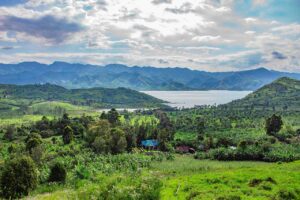
Challenges and Hopes for the Future
Congo has numerous problems, including infrastructural deficiencies, conflict, and poverty. The effects of the war are still being felt in some places. Nonetheless, there is a lot of hope for progress and peace. Young people are full of dreams, and education is getting better. Local communities and international organizations are collaborating to construct clean water systems, schools, and hospitals. Congo has a bright future because of its rich cultural heritage and stunning natural surroundings. The nation might rank among Africa’s most popular tourist destinations if peace keeps spreading.
Conclusion
Wonder, mystery, and tenacity abound in the Democratic Republic of the Congo. It is among the world’s most beautiful nations because of its rivers, forests, mountains, and wildlife. Congo offers countless tales and adventures, from the bustling streets of Kinshasa to the serene jungles of Salonga. It is a nation where culture and nature coexist peacefully. The Congo is a representation of Africa’s resilience and spirit, wild, proud, and hopeful, as it develops and rebuilds.

